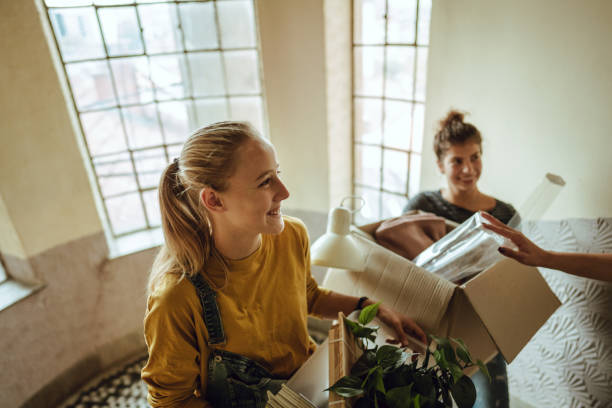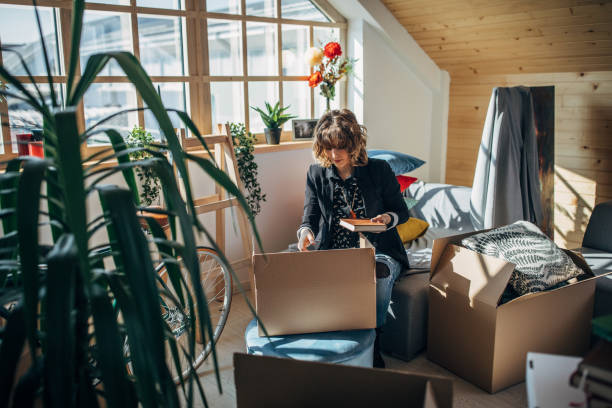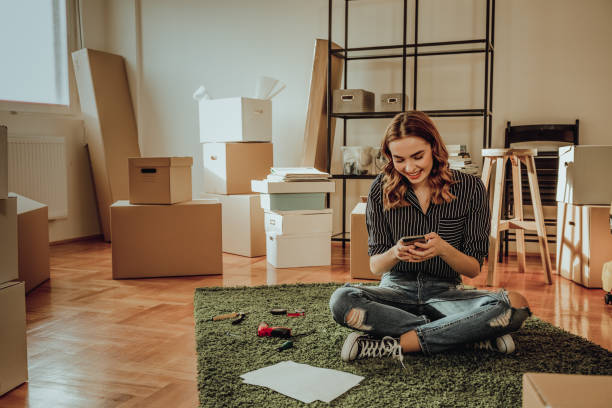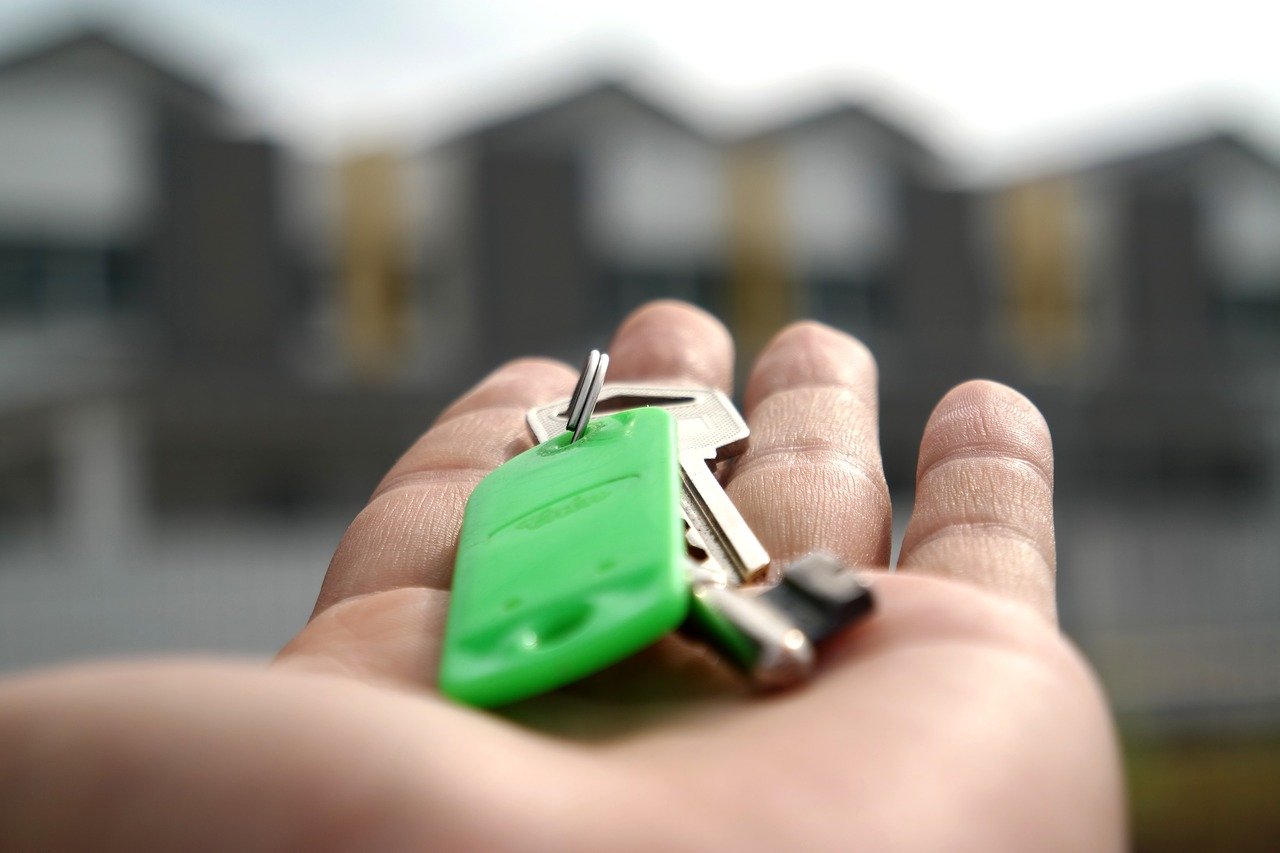For many people, moving into a new apartment is an extremely stressful and time-consuming process. It requires full commitment to execute, from reserving a truck to unloading and arranging furnishings in the new apartment.
By breaking down the moving process, you can better grasp what needs to be done, when, and by whom. This lessens the stress of moving to a new location. That said, how well-prepared you are for the undertaking will determine whether your move is stressful or smooth and straightforward.
First-time renters frequently fall into the same traps by failing to comprehend some simple moving techniques that may have helped them. For instance, many renters overpay for moving services by failing to make a truck reservation in advance. Check out some more tips on what to know for first-time renters here.
What to Know About Moving into an Apartment

Moving comes with a lot of obligations that could become overwhelming. So, to avoid experiencing burnout in the process, you need to understand how to navigate through the moving process. You need to be aware of every step and the expenses you incur from beginning to end.
If you have been living at your parents house, create your ‘what to look for when renting an apartment checklist’ and go through each step, checking all the boxes as you go, until you are positive that everything is in order.
That said, here is everything (apartment tips) you need to know about moving into your first apartment:
Talk to Your Current Landlord
Notify your current apartment landlord that you do not intend to extend the lease before making any moves to leave the property. The majority of apartment buildings demand a 30-day moving-out notice. You will want to submit this even before signing a lease at a new location. It is best to review your lease agreement and understand the requirements or steps for moving out. Learn how to read an apartment lease here.
If you submit your move–out request late, a penalty that could involve keeping your security deposit or charging you more money may apply. Learn what is a security deposit for an apartment here.
Furthermore, if you cannot resolve the conflict, this could harm your relationship with the property manager and eventually tarnish your rental history.
After receiving your request, the property manager will visit the property with your first apartment checklist to inspect or walk through it and determine any faults. You will get your security deposit if the landlord is satisfied with the unit’s state; otherwise, you may be required to pay for any damage caused to the property. Checkout our guide on how to get your security deposit back for further assistance.
Contact Your New Landlord
Talk to your new landlord about your move-in date. Request apartment keys and other valuable information, such as where to park the truck. It might not seem like a big deal now, but just wait until you park your truck in an inappropriate place and ruin your first impression of one of your new neighbors.
It is best to be aware of the community rules of each apartment building, including the apartment pet policy. Consider asking the landlord to show you around on the day of your move–in.
In addition, ask the new landlord how you should pay for your first month’s rent. Also, if you must complete a moving checklist together, ask whether it will be before or on the day of your relocation.
It is ideal to ask the community management whom to approach for maintenance requests before moving in. Learn more here about maintenance tips for apartments here.
Renters Insurance
If this is your first apartment, understand that most landlords require renters insurance before moving in. Do not confuse renters insurance and homeowners insurance; the former is tailored to tenants, while the latter is for homeowners and covers the dwelling rather than a tenants possessions.
Renters insurance shields you from damage. For instance, if your laptop or other priceless electronic equipment gets damaged due to a catastrophe, the policy will pay you back. Typically, renters insurance costs between $168 and $360 per year, which is about $14 to $30 per month.
There is a stark difference between the cost of the coverage or policy and the worth of your personal belongings. You stand to gain more in the event you lose your personal belongings.
If you have other policies, like auto insurance, you might want to find out if your current provider also offers renters insurance so you can perhaps get a discount. Learn more about if everyone in an apartment needs renters insurance here.

Moving Budget
Moving into your first apartment involves a lot of costs, from hiring a truck to hiring hourly workers to help you pack, load, and unload the items from the truck. In order to prevent a deficit that could delay your first apartment move, you must account for every expense you anticipate incurring.
You might need to consider the price of moving boxes and other moving supplies. Make a budget in advance by breaking down all the potential expenses you will face, and not just your moving expenses, plan about your monthly expenses as well if this is your first apartment. Learn more about what bills to expect when renting an apartment here.
The following list includes some moving-related expenses you can face during your first apartment:
- Renting a truck
- Buying packaging items
- Hourly workers pay (hired movers)
- Renters insurance
- Purchase furniture i.e. coffee table, couch, etc. (find out how much it costs to furnish an apartment)
- Water bottles (especially if you are moving into an apartment during the summer)
Making a list of potential expenses will help you better manage your money (save money in the process) and receive everything you require on time as you move into your first apartment.
A better way to budget could be by getting a free quote from a moving company like Three Movers. This way, you’ll know all the expenses and you won’t need to take care of each individual expense yourself. You’ll also save yourself a lot of energy and time as everything will be done for you.
Create an Inventory
The far more effective strategy to keep track of your belongings and prevent losing or misplacing any during the relocation process is to make an inventory. List down all your items and group them when packaging for easy tracking. For example, you may want to create separate inventory for the kitchen, bathroom, bedroom, and living room items.
Furthermore, take pictures to back up your inventory. Photographic documentation can aid you in monitoring the condition of the items before and after the transport. Make sure to take clear pictures with good lighting.
Secure Packaging Boxes and Tools
Where will you keep your kitchen supplies or clothes? You need boxes, packing tape, and packing paper; visit your neighborhood shop and select the appropriate packaging boxes for your goods. Depending on the size of your things, be sure to buy various sizes. Buy some to pack clothes, and others suitable for kitchen supplies. You may also want to think about storage for your groceries, which are often perishables.
Hire Movers
The most expensive part of moving is likely hiring a mover. By comparing prices and selecting the best mover, you will need all the good fortune you can muster. Typically, the total cost of moving depends on the size of your belongings and the distance to your destination. If you are moving across the state, brace yourself for a huge bill.
The estimated costs of hiring trucks are between $130 for a local trip to $3,250 for long-distance.
Having said that, to reduce your logistical costs, it is advisable to look for special offers and cheaper per-mile trucks (scheduling movers will help you save money). Although we recommend looking for reputable movers with solid online reviews, do not overlook new entry moving companies. They may be as good as the industry leaders and yet still offer you a lower rate.

Consider Storage
If you are downsizing (read more on how to downsize from a house to an apartment here), or your closet storage will not fit your belongings anymore, then consider renting storage units for your extra items. The location of the storage unit will depend on how frequently you need to access the items.
For instance, find a storage facility close by if you frequently require access to the belongings, but a facility farther away from your residence is still OK if you don’t frequently need access to the stuff.
Typically, a storage unit will cost about $190 per month, on average. A small unit may cost you $90, while a larger unit will cost you as high as $300 per month.
Having said that, the more items, the higher the cost of storage per month. Trying to get rid of things you do not need is a sensible strategy in this situation. For instance, you may want to offer large furniture, clothing, and other items for sale on Craigslist or to friends. Creating marketing collateral will help you sell your items fast. Learn other ways on how to declutter your apartment here.
Take Extra Measures when Packing Delicate Items
For your electronics and other delicate items, consider purchasing bubble wrap to add an additional layer of protection and serve as a shock absorber. Furthermore, transport flower vases and other valuable items in your personal vehicle for extra protection.
Start packing early before the moving truck arrives at your doorstep. Some items you can start packing days or weeks before your moving day.
Consider Moving Time
Are you moving in the winter months or summer months? Both times present different challenges, so you need to be aware of when to move during those two seasons. For instance, during the summer, the best time to move is early in the morning when the temperatures are still low, or late in the evening after the sunset to avoid the heat.
Making sure your new apartment’s sidewalks are cleared for the moving truck to pass should be a priority if you are relocating during the winter. Furthermore, it might not be a good idea to start too early in the morning; instead, you might want to wait until the temperature rises.
Setup Home Services
Before moving, spend a day or two setting up the home services. Here are the things you need to pay attention to when setting up your home:
Connect Utilities
Make sure your electricity is connected, as well as your gas and water supply. You do not want to move into an apartment complex just to discover that the electricity or water is not connected. Learn how to keep utility bills low in an apartment here.
Update Your Address
Be sure to update your address before moving. Visit a nearby local post office and request a change of address. Make sure you create a change of address checklist to help you update all things, like credit cards, banks, drivers licenses, etc.
Setup Internet and TV Connection
Nowadays, no one can rent an apartment without a WiFi connection. Ask the landlord whether the internet is provided by the apartment or by a third party. If it is a third party, consider looking for a reliable service provider and set up the connection days before your move. Also, make sure your TV connection is ready in advance.
Install Security System
Safety is important, so make sure you install security gadgets in your new apartment. It is often recommended to have CCTV cameras set up for surveillance.
Items to Keep Closer
Do not be naive to pack everything in the truck without thinking of urgency. There are certain items you need to keep closer or within an arm’s reach during relocation. With that said, here are some items you need to keep closer:
Coffee Maker
Make sure the coffee machine is just a little closer. Once the items are taken out of the truck, you might not be able to rearrange everything immediately (learn more on how to arrange furniture in a small apartment, here). That said, with the coffee machine closer, you may be able to make some drinks as soon as you arrive.
Cleaning Supplies & Toiletries
Shower curtains, toilet paper, and other cleaning supplies are some of the items you will use as soon as you arrive. It is obvious you need to do a thorough cleaning before and after moving in, so make sure the cleaning supplies are close by.
Emergency Supplies
Make sure your first aid kit is close by. There is a lot of movement involved with moving, and as a result, injuries to you or others are possible.
What to Look for in a New Neighborhood
As you are unfamiliar with your new neighborhood, it is advisable to learn about certain key locations before settling in, such as coffee shops. That said, here are some locations you need to keep track of after signing a lease agreement:
Grocery Store
Cooking is inevitable. Visit the neighborhood and discover the grocery stores, among other convenient stores nearby the apartment. How far is it from your first apartment?
Gas Station
Locate a nearby gas station before moving. You may need to gas the truck before leaving.
Transit Station
Will you be traveling to work? If yes, find the nearest transit station and establish how long it takes before you arrive at your workplace.
Healthcare Centers
Among the top of your list should be finding the nearby healthcare facility. Find out if there are any or how far is the nearest to the apartment.
These are some of the things you need to pay attention to during apartment tours. You will want to select an apartment that is strategically located close to all the amenities you need.
Final Thought
We recommend planning your move, no matter if this is your very first apartment move or not. Recognize the steps you must do both before and after your move. Even though it is simple to forget some things, making your first apartment checklist will help ensure that your move to the new apartment goes smoothly.
Lastly, if you have young children, make sure you talk to your friends or neighbors in advance so they could take care of them during your moving day.









